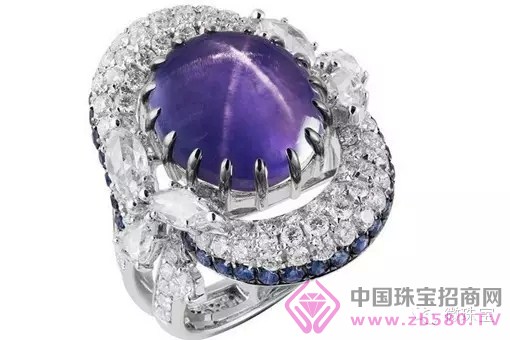When the "professionals" around you are free to talk about various professional terms and vocabulary, if you can't insert words because you don't understand them, isn't it really disappointing? If you want to get rid of the "Little White" identity, you can make up these professional terms. carat Carat is a unit of weight for gems, 1 carat equals 0.2 grams. This weight unit is derived from a plant seed called carob, which is used by the ancients to measure weight because it is light and stable at around 0.2 grams. Burning, no burning Many gems have poor color quality when they first show up, and they can't even meet the requirements of gems. However, heating certain gemstones in a specific environment will cause the quality of the gemstone to change, even reaching the "excellent" level. This will greatly increase the value of many gemstones and make the gem resources more fully utilized. Ruby, sapphire, and tanzanite are typical of such gems, which we call burning. If it is not heat treated, it is called no burning. There are burnt gems that are acceptable to the market, but at the same quality, no burnt products are definitely more expensive. On the authoritative certificate, it will indicate whether there is burning or no burning. Taking a typical GRS certificate as an example, if H is written in the remarks column, it means heat treatment. Pigeon blood red Pigeon blood red is a business concept for the best color ruby. The color of this ruby ​​is particularly close to the color of the fresh arterial blood of the adult pigeon, hence the name. The standard for pigeon blood red is very strict. In the GRS certificate, the pigeon blood red is marked if it meets their standards. Cornflower blue Similar to the pigeon blood red, Cornflower Blue is a commercial concept for the best color sapphires in the Kashmir region of India. The cornflower flower is a German national flower with a charming and fascinating blue color. The sapphire, which meets the "Bluebonnet Blue" standard, has always been considered the top of the sapphire pyramid and is more precious than the Royal Blue we know. In the GRS certificate, the cornflower blue is also marked. Cat's eye The cat's eye effect is a special optical effect of a gemstone. It is generally found in gemstones with curved faces. The internal orientation is distributed with many parallel fibrous and needle-like inclusions. The reflection of light causes a single bright band of light to appear on the surface of the gemstone, similar to the cat's narrow eyes. The opal we usually refer to is the gold emerald with cat's eye effect. Other gemstones with cat's eye effect can only add the word of cat's eye before and after the name of the gemstone, such as quartz cat's eye, apatite cat's eye, tourmaline cat's eye and so on. Fire color Fire color refers to the colored light reflected from the inside of the faceted gemstone. When white light is incident on the faceted gemstone, after continuous reflection and refraction, the light of various wavelengths constituting the white light is refracted at different angles to cause light decomposition, and the color in the spectrum is exhibited. Fire color is an important part of the beauty of faceted gemstones. Inclusion body Due to the natural properties of gemstones, most gemstones contain tiny microscopic natural objects visible under the microscope. In fact, strictly speaking, this is an internal flaw or flaw in the gemstone, but we prefer to call it an inclusion or inclusion. The inclusion is not completely useless. Sometimes through the inclusions, we can judge the naturalness, type, origin of the gemstone, or get a special beauty of fantasy. Cat's eye and starlight effects are all inclusive. A goods (B goods, B + C) The ABC mentioned here is generally for jade. A jadeite refers to jadeite that is only mechanically processed, color, structure and transparency are kept in a natural state. In short, it is natural jade. B jade is a low-grade jade that has been bleached with strong acid and filled with glue or resin. C goods refers to the jade that has been dyed. Because jade dyeing is often treated with pickling and bleaching, we are used to calling it B+C jade. Junior, junior, and fifth Due to the particularity of the jewelry industry, when quoting, it is often not desirable or inconvenient to say a precise number, but with a rough interval. Large, medium, and small represent the 1-3, 4-6, and 7-9 at the beginning of the number, while the third, fourth, and fifth represent the number of digits. So we don't have to say the exact number, we can also know an approximate price, for example, the junior is 700-999, the small four is 1000-3999, and the fifth is 40000-69999. Polyester Rayon Spandex Fabric Ayon Spandex Twill Fabric,Rayon Polyster Twill Fabric,Rayon Polyester Shirt Fabric,Polyester Rayon Spandex Fabric Shaoxing Guanglin Textile Co.,Ltd , https://www.sxguanglin.com

August 23, 2021